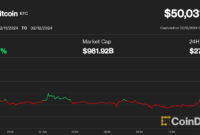Stellar, or Stellar Lumens, is an open source, decentralized protocol for digital currency to fiat money low-cost transfers which allows cross-border transactions between any pair of currencies. The Stellar protocol is supported by a Delaware nonprofit corporation, the Stellar Development Foundation, though this organization does not enjoy tax-exempt status with the IRS.
WHAT IS STELLAR (XLM) BLOCKCHAIN? A COMPLETE GUIDE FOR BEGINNERS
What is common among the fastest growing blockchain platforms? The answer to this question is not difficult if we take a closer look at the leading and emerging blockchain platforms. All of the emerging blockchain platforms are betting their bucks on three winning combinations – increased speed, scalability and reduced cost of transactions compared to the older predecessors. And Stellar blockchain is in the same league. If the focus is not strong enough on these three areas, it is almost impossible for a blockchain platform to take off.
At present, Stellar is among the top 10 popular blockchain platforms. Stellar Lumens (XLM) are one of the leading cryptocurrencies with steadily rising acceptance and adoption in the market.
What is Stellar (XLM) ?
Stellar is a payment protocol based on the distributed ledger technology. It allows quick, cross-border transactions between any pair of currencies. In many ways, it is similar to other blockchain-based cryptocurrencies.
According to their website, Stellar blockchain “is a platform that connects banks, payment systems, and people” and is intended to “move money quickly, reliably, and at almost no cost.”
Stellar Lumen (XLM), the native digital currency of Stellar, powers the entire range of operations on the blockchain network. At the inception of the Stellar network, 100 billion XLM/Stellar Lumens were created.
The only other mechanism for the creation of XLM is inflation. There is a fixed 1% annual inflation on the Lumen creation rate to account for economic growth and lost Lumens. The newly created Lumens are generated every week and distributed via a direct voting method.
Follow Them Twitter: @Stellerorg
KEY TAKEAWAYS
- Stellar is a decentralized protocol on open-source code to transfer digital currency to fiat money domestically and across borders.
- The Stellar blockchain’s cryptocurrency is called the lumen, a token that trades under the symbol XLM.
- Stellar is one of the best-performing altcoins of the last five years with a market cap of just over $1 billion.
HOW IT WORKS?
Stellar is an open-source, decentralized payment protocol that facilitates fast, cross-border transactions between any pair of currencies. It operates using blockchain technology. Its native asset is called Lumen (XLM). Lumen is the one that powers the Stellar network and all its operations. It is similar to Ether, the digital asset that powers the Ethereum network. This article will act as a guide and provide you with a deep dive into the Stellar blockchain and how it works.
Understanding Stellar
Stellar was formed in 2014 and was the brainchild of Jed McCaleb and Joyce Kim. It was forked from the ‘Ripple’ protocol. The primary advantage of Stellar is that it allows people to move money quickly and reliably across borders for fractions of a penny.
What Are the Differences Between Stellar and Ripple?
People who have used both Stellar and Ripple have noted the similarities between the two platforms. They use almost identical blockchain code, neither allows mining, both use a distributed ledger and both provide nearly free and instantaneous transactions.
These similarities are due mainly to the fact that McCaleb, one of the founders of both platforms, knew what worked well with Ripple and brought that vision and knowledge with him to create Stellar.
Advantages Stellar Has (XLM) Over Ripple (XRP)
The platforms differ significantly, however, in their goals. Ripple was created so that banks could make transfers around the world in a matter of seconds for a meager price. It improved the efficiency of banks and financial systems.
Stellar, on the other hand, was built with the average user in mind and for those in developing countries. The platform provides access to the global economy through simple, quick and low-cost transactions. While the average person can use Ripple and banks can use Stellar, they were each designed for specific users to provide a more efficient experience to their target markets.
Are Stellar Lumens Real Money?
Whilst Lumens does have intrinsic value, the tokens main use is to act as a bridge between other currencies. As such, it would be more helpful to understand it as being more than just money. The ability to convert currencies for users, and in such a short space of time, distinguish from normal fiat currencies that might normally be described as ‘real money’.
Fees & Expenses
The cost for a Lumens transaction is 0.00001 XLM, making it incredibly cheap. When purchasing Lumens themselves on online exchanges a fee will be charged by the site for your purchase of the Lumens.
For example, on Coinbase you will be charged between $0.99 – $2.99 for any purchase between $1 – $200. There will also be a fee if you use a debit card of 3.99%. Exchanges like Kraken have much lower fees, of around 0.26%, it is still a cost on top of the actual coins themselves.
How Safe Are Stellar Lumens?
By charging a fee per transaction, as well as a minimum of 1 XLM required in a Lumens wallet at any one time, Lumens offers a degree of protection from flood attacks. These are where hackers try to flood the system will a huge number of microtransactions. Stellar Lumens has protected itself against such attacks by simply making them too expensive for the hacker to yield any sort of feasible gain. In a testament to these measures, the Stellar Network has never suffered a serious attack.
Stellar’s primary focus is on developing economies in the areas of remittances and bank loans to those who are outside of the scope of the banking services. Stellar doesn’t charge individuals or institutions for using the network.
Stellar supports a distributed exchange mode. This allows users to send payments in specific currencies even though they may hold credits in another, while the network automatically performs the forex conversion. The receiver can withdraw their currency equivalent through a partner institute like a bank.
![What is Stellar (XLM) Cryptocurrency ? | Crypto ki news What is Stellar (XLM) Cryptocurrency ? [Everything U Need to Know]](https://cryptokinews.com/wp-content/uploads/2021/08/What-is-Stellar-XLM-Cryptocurrency-_.jpg)


